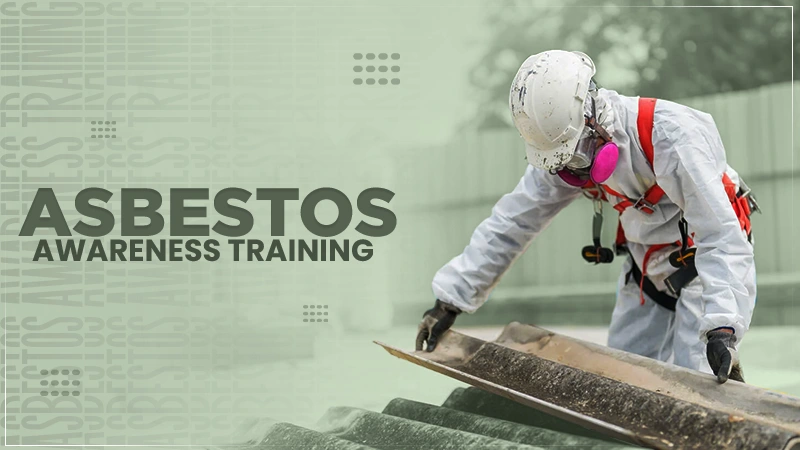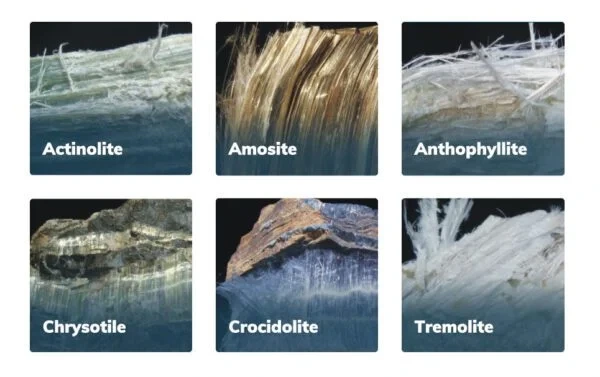
Asbestos is the most widely used construction material because it is affordable, durable, and fireproof. These unique properties make it ideal for insulation, paints, plumbing materials, etc.
However, in the 1970s, it was discovered that long-time exposure to asbestos fibers can cause lung cancer.
According to the World Health Organization, approximately 125 million people in the workplace are exposed to asbestos, and the harmful signs don’t show up before 30 to 40 years.
Therefore, every building construction and repair company should provide an asbestos awareness certificate to their employees.
Read on to find out the related industries where asbestos is used, as well as the benefits and training modules that are necessary to implement to ensure worker’s safety.
What Types of Asbestos Are Used in Industries?

As mentioned before, asbestos material can be conveniently molded. It is made up of six natural mineral fibers, that are perfect for commercial purposes.
The different types of asbestos are Actinolite, Amosite, Crocidolite, Chrysotile, Anthophylite, and Tremolite.
ACMs or Asbestos Containing Materials (as seen in the image above) are still used for the following purposes:
- Coatings
- Fireproofing
- Insulation
- Cement Sheets
- Piping
- Textiles
- Brake Linings
- Building Materials
It is also used in many household products, such as artificial ashes in gas-fired fireplaces, some plastic, paints, adhesives, attic insulation, and consumer garden products.
Therefore, being a toxic product, awareness is necessary to take preventive measures or find substitute materials that are harmless and sustainable.
DO YOU KNOW?
Brazil is still an asbestos producer and exporter and made extensive use of asbestos before 2017.
Why is Asbestos Awareness Training Necessary?
The toxic fibers of asbestos affect not just miners but also hired workers for repair and those who breathe it regularly while doing plumbing, building surveyors, ventilation engineers, etc.
Many developed as well as economically strong countries like China, India, Russia, and the United States still use asbestos for construction.
Needless to say, along with spreading awareness, strict implementation and following government guidelines are also necessary.
In fact, additional factors that can aggravate asbestos-related diseases are smoking, preexisting lung disease, and even genetic mutation.
The correct level of training like the UKATA asbestos awareness improves the work environment and saves many lives by taking preventive measures before a disease becomes fatal.
What Does the Training Module Cover?
The management of a company is responsible for conducting professional training of employees as a necessary induction program along with providing safety gear.
There are three levels of the asbestos training modules:
- Asbestos Awareness Training is for people not directly exposed to toxic materials.
- Non-Licensable Information means for those staff members who can use cover to minimize the risk of asbestos exposure.
- Licensed Asbestos Instruction is the high-risk category that involves licensed contractors.
These methods cover various topics that can be taught in the classroom through theoretical information, practical application, and e-learning in the following ways:
Instructions for Workers Based on TNA
TNA or Training Needs Analysis is used to identify the type of industry and work an employee is doing and accordingly, the training is given.
Once the categorization is done, instruction starts with making employees aware of the types and fundamentals of asbestos risks.
This further includes:
- The properties of asbestos and how it impacts health.
- Informing of the uses and occurrences of toxic elements in construction material.
- How to identify dangerous symptoms and what to do during an emergency?
- Preventive measures to avoid the risk of direct or indirect exposure to toxins.
FUN FACT
Asbestos even entered the Golden Age of Cinema, where it was used as fake snow, replacing cotton that caught fire easily.
Classroom and Practical Training
Category B and C level workers need practical training because they cannot avoid direct asbestos exposure.
These instructional classes cover careful methods while drilling, painting, laying cables, or removing floor tiles that need close inspection and work.
Here are the details covered in these classrooms:
- Predetermine the intensity and duration of direct contact with toxins.
- Practice safety measures such as protective attire, face masks, gloves, tools, etc.
- Use protective equipment appropriately and take timely breaks.
- Identifying risk symptoms and handling emergencies.
- Waste handling procedures.
Moreover, Notifiable Non-Licensed Work or NNLW and Licensable workers need to get signed documents of the following copies from their respective employers:
- Copies of risk assessment, work plan, details, and air monitoring results.
- Records of safety measures, health, FFT or Face Fit Test results, and individual training certificates.
- For Licensed workers, an additional copy of notification of work made to the enforcing authority is necessary.
E-Learning
With technical certifications available online, encourages employees and managers to check all training details on the website and get their workers an authentic license.
This also wins workers’ trust in a construction company as their safety is kept in mind, and they are more eager to follow preventable measures.
Online asbestos training course certificates issued by platforms like UKATA provide legit tests are legit and are industry-approved. They are valid for 12 months from the date of issue and can be refreshed as per requirement.

STATISTICS
The graph shows the global asbestos testing market growth since 2023. Due to continued awareness of its negative impact on health, its testing is predicted to extend consistently till 2031.
Regulatory Guidelines
Though big and small industries understand the need to maintain the safety of workers and the health risks of asbestos, many neglect or don’t inform their workers.
This is an alarming issue that needs strict regulatory guidelines and more government intervention.
Even after obtaining a training certificate, it is not proof of competence, which creates barriers to ensuring worker safety.
Conclusion
Asbestos training should be made mandatory for industries for high-risk category workers. It is the duty and responsibility of the employer, whether associated with a company or independent, to create a safe work environment.
A detailed instructional course covers awareness about asbestos-related diseases and preventive measures, practical tips, and necessary copies of air monitoring and health records.
Therefore, this certification helps avoid many occupational hazards that could be prevented by staying vigilant.